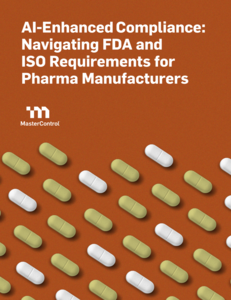
GxP Lifeline
7 Key Concepts in the FDA’s Quality System Guidance for Pharma

The U.S. Food and Drug Administration (FDA) has an abundance of guidance for the pharmaceutical industry. One document that’s particularly important is the “Quality Systems Approach to Pharmaceutical Current Good Manufacturing Practice Regulations.” Whether you’re new to this quality systems guidance or simply need a refresher, you’ve come to the right place.
A Brief Background of Pharmaceutical Quality Systems and CGMP
The guidance was created in 2006, and its purpose is to help pharmaceutical companies operate quality systems that are fully compliant with current good manufacturing practice (CGMP) regulations. At the time it was released, then-FDA Deputy Commissioner for Operations Dr. Janet Woodcock said, “This guidance incorporates modern quality principles into FDA’s approach to manufacturing, encouraging industry adoption of new technological advances and integrated quality systems.” (1)
Her words ring just as true today. This guidance, and newer FDA regulations that have only recently been drafted, are encouraging pharma manufacturers to adopt digital tools to streamline operations, improve quality, and make it possible to produce drugs more efficiently and at a lower cost.
7 Key Concepts for Pharmaceutical Quality Systems
The guidance defines seven key concepts that the FDA deems critical for a discussion on modern quality management systems and defines them within the scope of pharma manufacturing. (2)
Quality:
Refers to the strength, purity, and other quality characteristics meant to ensure a drug product’s safety and effectiveness.
Quality by Design and Product Development:
Designing and developing a product and associated manufacturing processes that will be used during product development to ensure that the product consistently attains a predefined quality.
Quality Risk Management:
This includes assessing the risks of quality issues, selecting and implementing risk management controls commensurate with the level of risk, and evaluating the results of the risk management efforts.
Corrective Action and Preventive Action (CAPA):
Focuses on investigating, understanding, and correcting discrepancies while preventing their recurrence.
Change Control:
Managing change to prevent unintended consequences.
Quality Unit:
A group within an organization that promotes quality in general practice.
Six-System Inspection Model:
A model that can help pharmaceutical manufacturers comply with CGMP regulations. The six systems referred to in this inspection model are: quality, production, facilities and equipment, laboratory controls, materials, and packaging and labeling.
Sources:
- FDA Issues Final Manufacturing Quality Systems Guidance For Pharmaceutical Manufacturers, Pharmaceutical Online, October 4, 2006.
- Quality Systems Approach to Pharmaceutical Current Good Manufacturing Practice Regulations, U.S. Food and Drug Administration, Content current as of April 16, 2020.
Free Resource

Enjoying this blog? Learn More.
FDA and ISO Compliance for Pharmaceutical Manufacturers
Download Now